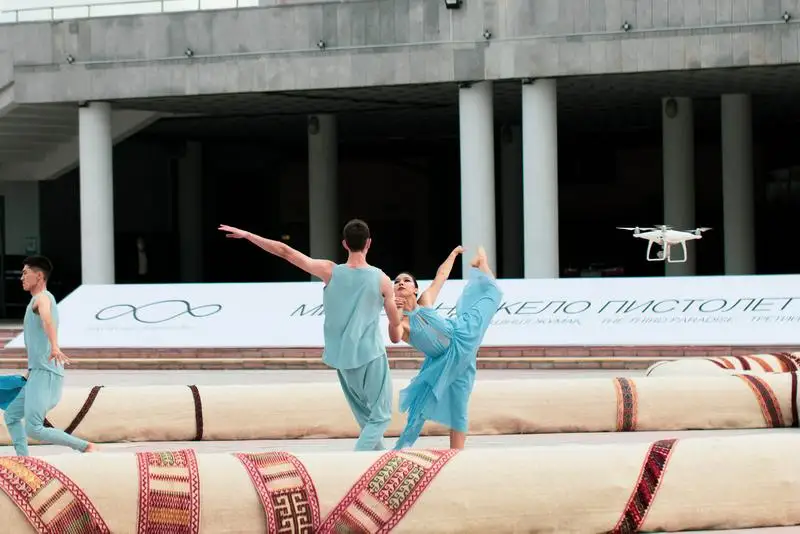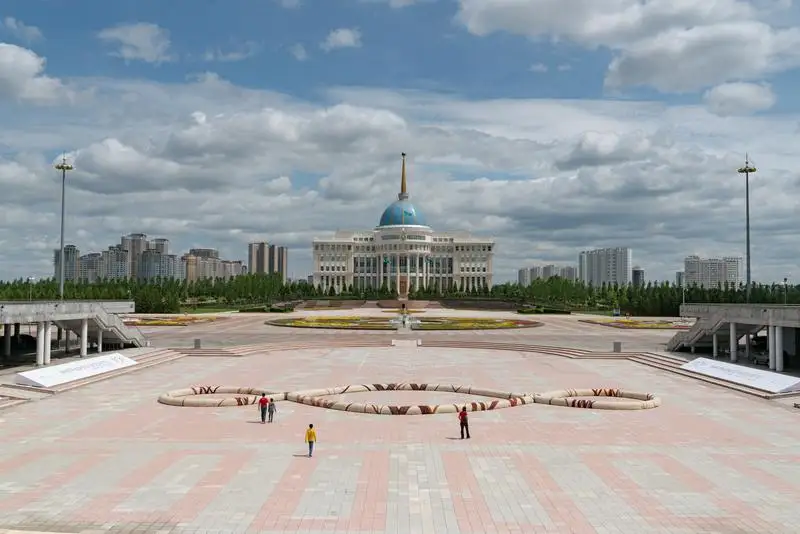Third Paradise – symbolic art for solidarity in global fight against COVID-19 presented in Kazakhstan

The project is organized by the UN in Kazakhstan and «Artios» creative agency with the support of the Nur-Sultan City Akimat. Prominent Italian artist Michelangelo Pistoletto’s concept was previously exhibited at the world’s leading art venues and for the first time presented in Kazakhstan.
In light of the growing COVID-19 crisis the «Third Paradise» invites people to dialogue on the future they want to see and serves as a constant reminder on how important it is to strive to create a sustainable environment and conscious consumption. Michelangelo Pistoletto has been developing the idea of this symbol over the past ten years. «Third Paradise» is the third phase of humanity, realized as a balanced connection between technology and nature, which reflects the desire of mankind to achieve the goals of sustainable development.

UN Resident Coordinator for Kazakhstan Mr Norimasa Shimomura noted: « Inclusive growth, prosperity and secure life couldn’t be achieved without peace and society, where people work together to overcome their differences. The «Third Paradise» is an artistic expression of what is represented by the 17 Sustainable Development Goals, which were adopted by all counties, including Kazakhstan, back in 2015 and all countries are committed towards achieving them «.
Michelangelo Pistoletto, who has recently recovered from COVID-19, addressing the audience in Kazakhstan, underlined that « It's an honor to represent my work in Kazakhstan. The «Third paradise» is balance, unity and harmony. I hope that this symbol will bring great luck to your country «.

The «Third Paradise» is a combination of progressive art project and traditional materials of nomadic culture of the Great Steppe. In the creation of the 40-meter size installation solely local materials have been used, including 193 square meters of white wool felt, symbolizing the number of the UN Member States, and authentic «basqur» – embroidered ribbons, each of them has an infinity sign in the patterns, thus duplicating the message of the project.
This art is inspired by the mathematical infinity sign, and features three circles which represent the worlds of nature, technology, and a new world where people work together to bridge differences, find sustainable development, promote peace and create dialogue. An important part of the «Third Paradise» concept is an environmentally friendly way of thinking and criticism of anthropocentric consciousness, which also reflects the main ideas and directions of the UN.

« The wool felt from which the entire installation is created continues Arté Povera ideas of using natural materials, embodying environmentally conscious art. This symbol transforms reality, and is a vehicle for global ideas to reassemble the world, reflecting unity and sustainable development, which more than ever, resonates in this difficult time of pandemic for all countries «, noted curator of the installation, Director of Artios Ms Dina Baitassova.
During the opening of the installation, several dance and music performances have been held: prominent ethno-musician and composer of Kazakhstan Yedil Khussainov mastered a rare type of guttural singing that fascinates the listener with its mystic and shamanistic vibes. The art installation is placed on Nurzhol boulevard, at the amphitheater in front of the Residence of the President of the Republic of Kazakhstan – Akorda, and to be displayed during the next two months. In the framework of the project several online educational seminars, master classes and UN75 dialogues are planned.
Previous embodiments of the «Third Paradise» installation have been exhibited in Louvre (Paris), the UN Headquarters in Geneva, at the European Council building in Brussels, Milan, Tokyo and many other cities of the world.